Find the soul of Morocco in Fez
This onetime imperial city is a cultural and spiritual center
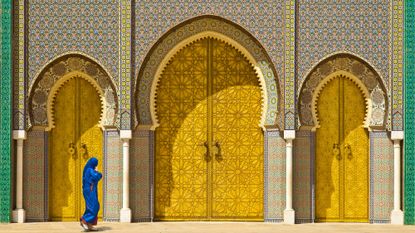

In Fez, there is no escaping the past — not that you would want to. Considered the cultural capital and spiritual center of Morocco, Fez is also the oldest imperial city in the country, and its vibrant history is alive as you walk through the ancient medina.
A medina like no other
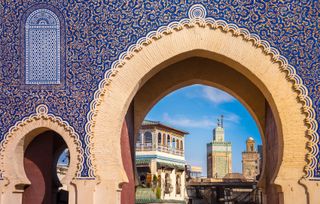
The Bab Bou Jeloud is one of the gates that welcomes visitors to the Medina of Fez
The Medina of Fez feels like a medieval maze, with twists and turns that take you further back in time. This walled ancient quarter, also known as Fez el Bali, dates to the 9th century, and because vehicles and motorbikes are prohibited, this is the world's largest car-free urban area. It holds shops, food stalls and riads (houses,) and many artisans make their crafts here, giving visitors a "rare opportunity to see how many distinctly Moroccan treasures, from fine leather to copper pots, are made," Lonely Planet said.
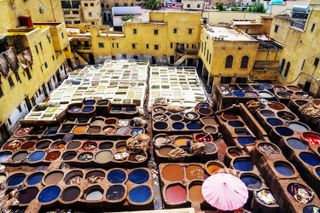
The Chaouwara Tannery is always busy with workers making leather
One of those spots is the Chaouwara Tannery, believed to be the oldest operating tannery on the planet. Visitors stand on balconies and look down at the workers; from this viewpoint, you can see bowls of colorful dyes and watch every step of turning a hide into a piece of leather. It's "striking to see the hard physical labor," Lonely Planet said. The smells will be, um, pungent, so when entering the tannery, grab a few mint leaves to place in front of your nose.
Subscribe to The Week
Escape your echo chamber. Get the facts behind the news, plus analysis from multiple perspectives.

Sign up for The Week's Free Newsletters
From our morning news briefing to a weekly Good News Newsletter, get the best of The Week delivered directly to your inbox.
From our morning news briefing to a weekly Good News Newsletter, get the best of The Week delivered directly to your inbox.
Because of the medina's thousands of tiny streets, cobbled alleyways and unmarked passages, it is "nearly impossible to maneuver through the complex tangle," Condé Nast Traveler said. It is highly recommended that first-time visitors hire a guide to help them understand the topsy-turviness, otherwise they run the risk of getting lost and being unable to "discover the true magic of this ancient and complicated city."
Exploring outside the medina
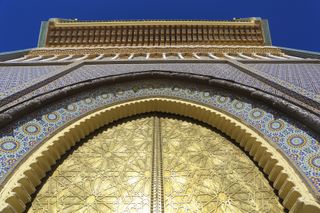
Unless you have an invitation, you can only see the golden gates outside of the Royal Palace
Head to Jardin Jnan Sbil for a breath of fresh air. These tranquil gardens were once part of the Royal Palace, and you can clear your head walking down the pathways and listening to the fountains. As for the Royal Palace, visitors are not allowed inside unless invited, but you can walk up to the elaborate front gates and see the beautifully detailed tile work.
There are several madrasas (Islamic schools) in Fez, and what makes Medersa Bou Inania special is that it is also attached to a mosque. A prime example of Marinid architecture, the madrasa was completed in the 14th century, and visitors are allowed to go into its courtyard. From here, you can look up and see the madrasa's complex geometric tile work, stucco carvings and green roof.
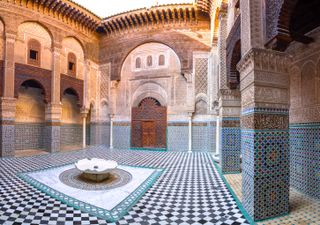
Al-Attarine Medersa dates back to the 14th century
The Al-Attarine Medersa is another architectural wonder. Smaller than Bou Inania, it is no less dramatic, with a courtyard that is a "dazzling example of intricate Islamic" design, Atlas Obscura said. Al-Attarine is known as the madrasa of the perfumers because it is close to the section of the medina where fragrances are purchased.
Diversity in dining
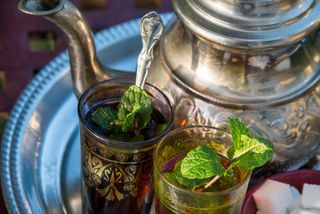
Expect to drink several glasses of mint tea a day during a trip to Morocco
Moroccan cuisine is a flavorful blend of Arab, Berber, Mediterranean and Andalusian influences. "People often think that Moroccan food is just tagine and couscous," Tasting Marrakech owner Mandy Sinclair told The Times, but it is "hugely diverse." Essential dishes to try include b'stilla, a flaky pastry pie filled with eggs, almonds and either pigeon or chicken, and khobz, bread made from semolina flour. Tea is a way of life in Morocco, and one of the most popular spots to grab a glass is at Abdullah Touati's tea stall in the medina, where he has been serving a blend of spearmint, peppermint, marjoram, lemon verbena and sage since 1969.
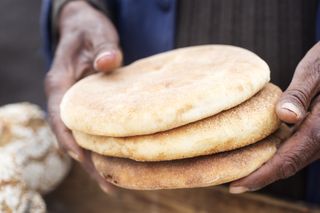
Khobz is a staple of Moroccan cuisine
One of Fez's top dining destinations is Nur, a restaurant that is as "cutting-edge as its off-the-wall monochrome decor," National Geographic said. Spanish-Moroccan chef Najat Kaanache carefully crafts a 10-dish tasting menu that uses produce from the medina alongside local meat and seafood. There is always an "eclectic mix of dishes, from calamari with lemongrass broth to duck with artichoke, truffle and Moroccan spices."
The people of Fez are proud of their food, and there are cooking classes offered at restaurants (including Nur), in hotels and at establishments like the Fez Cooking School. At Cafe Clock, students walk through the medina with a chef to pick up ingredients and then learn how to make a classic Moroccan salad, soup, main course and dessert.
Feeling at home in Fez
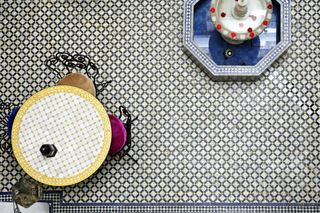
Riads often have tiled courtyards meant to be a quiet spot for relaxing
Fez is filled with riads offering world-class hospitality in historic dwellings. Moorish architecture aficionados will "ooh" and "aah" over Dar Seffarine, an approximately 600-year-old house that recently underwent a seven-year restoration. It emerged as an "impeccable, some might even say improved, version of its glorious former self," The Telegraph said, with tall columns, elaborate woodwork and mosaic and marble floors.
Palais Amani is another traditional guesthouse presenting "pure, unadulterated Moroccan opulence," The Independent said. The tiled courtyard garden, with its flower-shaped fountain, fruit trees and comfortable seating, is an "oasis of tranquility in which to escape the clamor and hustle" of the medina. Take this feeling even further by booking a body treatment at the in-house hammam.
Create an account with the same email registered to your subscription to unlock access.
Sign up for Today's Best Articles in your inbox
A free daily email with the biggest news stories of the day – and the best features from TheWeek.com
Catherine Garcia has worked as a senior writer at The Week since 2014. Her writing and reporting have appeared in Entertainment Weekly, The New York Times, Wirecutter, NBC News and "The Book of Jezebel," among others. She's a graduate of the University of Redlands and the Columbia University Graduate School of Journalism.
-
 Israel, UN agree to Gaza pauses for polio vaccinations
Israel, UN agree to Gaza pauses for polio vaccinationsSpeed Read Gaza's first case of polio in 25 years was confirmed last week in a 10-month-old boy who is now partially paralyzed
By Rafi Schwartz, The Week US Published
-
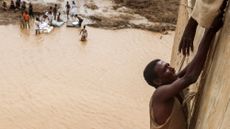 The week's best photos
The week's best photosA helping hand, a rare dolphin and more
By Anahi Valenzuela, The Week US Published
-
 Today's political cartoons - August 30, 2024
Today's political cartoons - August 30, 2024Cartoons Friday's cartoons - seasoned vets, football season, and more
By The Week US Published
-
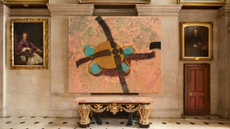 Mohammed Sami: After the Storm – a 'cunning' and 'highly intelligent' show
Mohammed Sami: After the Storm – a 'cunning' and 'highly intelligent' showThe Week Recommends The Iraqi artist brings 14 of his 'exhilarating' works to Blenheim Palace
By The Week UK Published
-
 Horatio Clare chooses his favourite books
Horatio Clare chooses his favourite booksThe Week Recommends Horatio Clare chooses his favourite books
By The Week UK Published
-
 Kneecap: 'ballsy and brave' Irish-language music biopic
Kneecap: 'ballsy and brave' Irish-language music biopicThe Week Recommends 'Riotous' Belfast-set comedy about a real-life hip of trio is 'one hell of a laugh'
By The Week UK Published
-
 5 riveting books to take you through September
5 riveting books to take you through SeptemberThe Week Recommends A return to Dublin and the Rooneyverse, plus a peek at some Trump family history
By Theara Coleman, The Week US Published
-
 Movies to watch in September, from 'Beetlejuice Beetlejuice' to 'Megapolis'
Movies to watch in September, from 'Beetlejuice Beetlejuice' to 'Megapolis'The Week Recommends Tim Burton's undead sequel, an insane Francis Ford Coppola epic and a new Dreamworks animation
By Anya Jaremko-Greenwold, The Week US Published
-
 Sherwood, series two: 'stuffed to the gills with brilliant performances'
Sherwood, series two: 'stuffed to the gills with brilliant performances'The Week Recommends The latest instalment of James Graham's gritty crime drama is 'superb'
By The Week UK Published
-
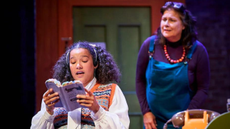 The Brenda Line: a 'confident and adventurous' debut from Harry Mould
The Brenda Line: a 'confident and adventurous' debut from Harry MouldThe Week Recommends 'Sweet' and funny play about the Samaritans volunteers tasked with talking to 'telephone masturbators' in the 1970s
By Irenie Forshaw, The Week UK Published
-
 Clean up your travel experience with these 8 sanitizing products
Clean up your travel experience with these 8 sanitizing productsThe Week Recommends For a vacation with less stress and more sparkle, disinfect your space
By Catherine Garcia, The Week US Published